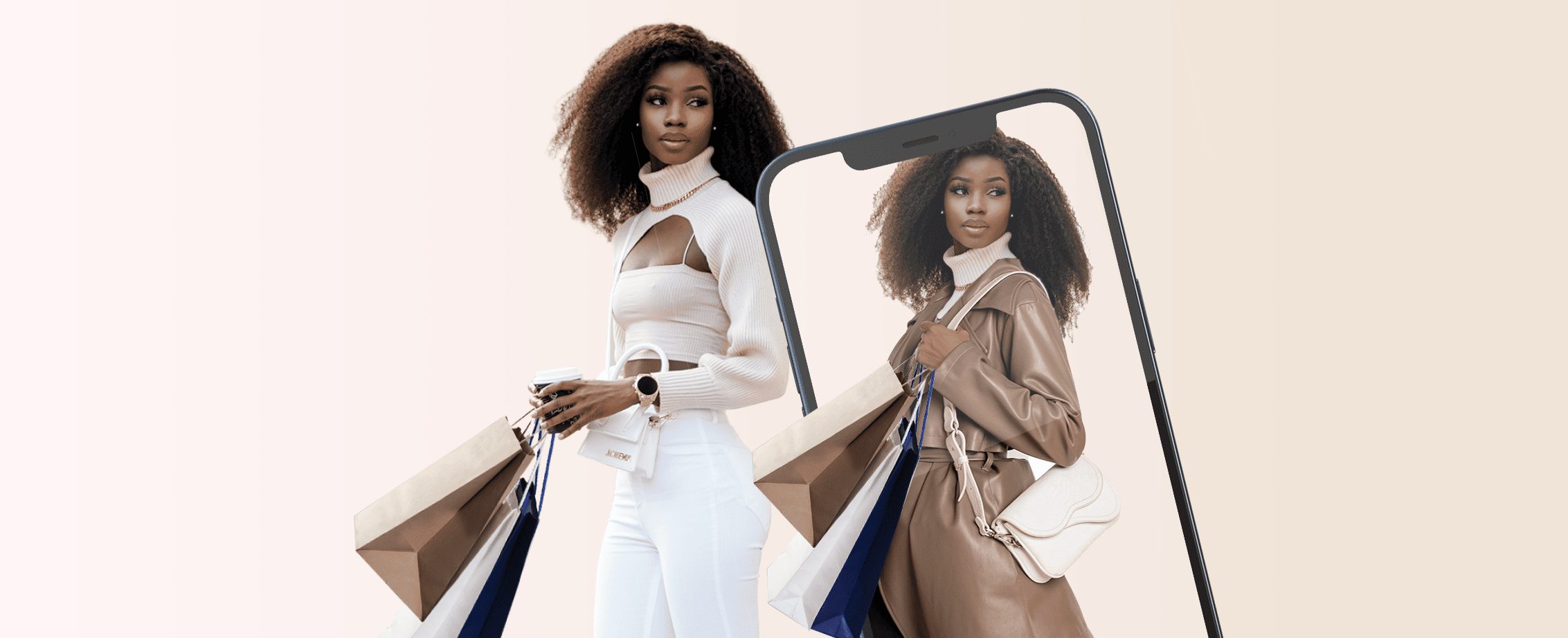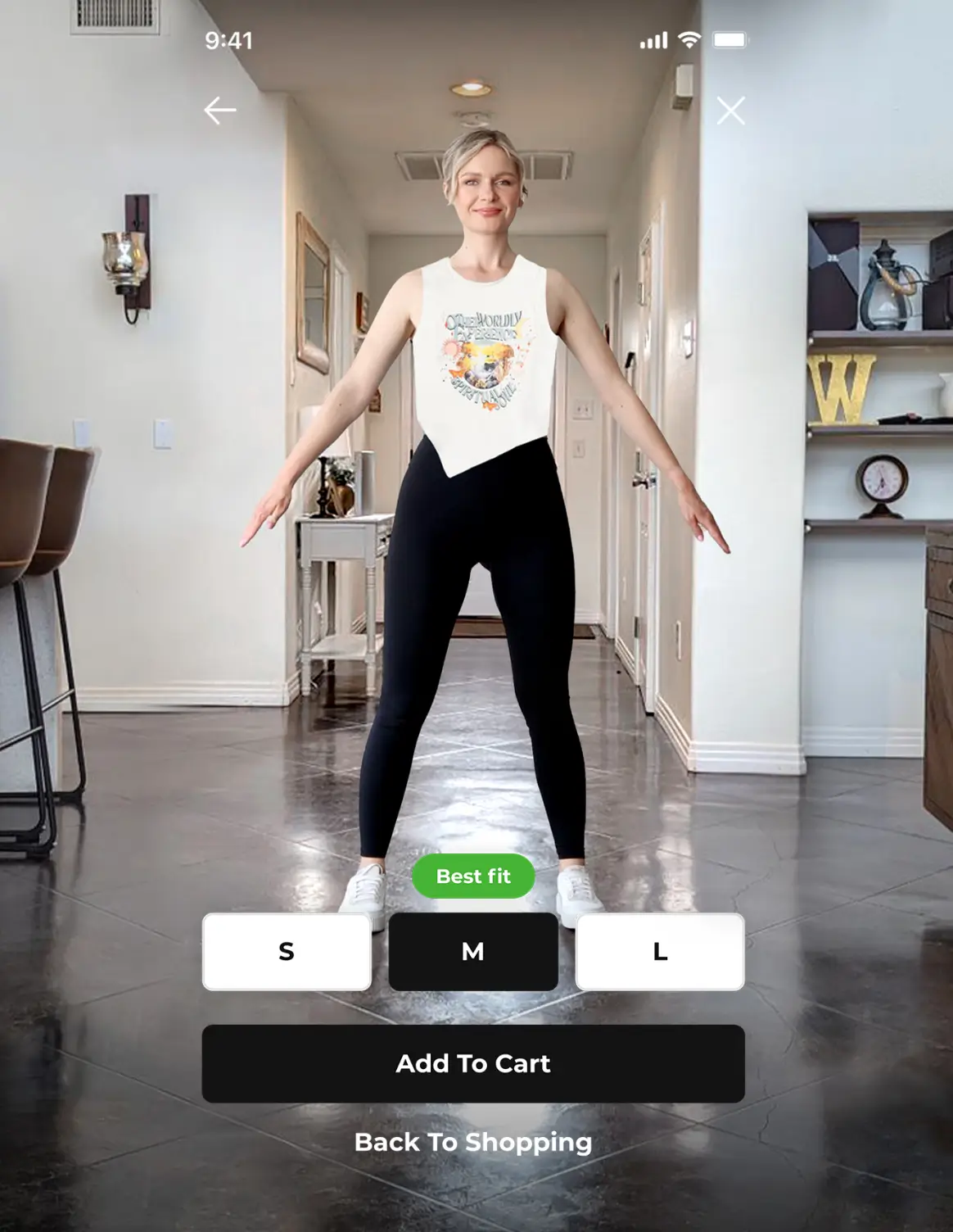Augmented reality virtual try-on tools can bridge the gap between digital and physical retail, generate valuable data for product development and planning, and create a modern fashion industry that serves the needs of both businesses and consumers.
Augmented reality, an immersive technology that superimposes computer-generated images over the real world, is emerging as a key focus for forward-thinking businesses. The global mixed reality market, valued at $31b in 2021, is set to reach close to $300b within three years, according to Statista.
One such industry embracing AR technology is fashion. The pandemic helped to pique interest in augmented reality clothing, with brands turning to fashion virtual model and influencers to showcase their latest designs. Now, the industry’s innovators are continuing to explore the potential of AR to enhance their supply chains and improve the customer journey.

Virtual try-on technology, in particular, has a huge role to play in the future of fashion. Essentially, these solutions bring the physical fitting room into the digital realm, allowing customers to – through augmented reality – try on clothes without visiting a brick and mortar store. Augmented reality trying-on clothes solutions use a camera to capture the customer while underlying AR technology maps a realistic virtual representation of a product over the customer’s body in real time. With AR try-on, clothes shopping becomes far easier and more accessible for consumers. AR technology in fashion is also a growing trend as the virtual fitting room market size is projected to expand at a compound annual growth rate (CAGR) of 24.1% between 2023 and 2030.
For the fashion world, this will prove revolutionary — AR for clothing can bridge the gap between digital and physical retail, generate data to refine product development and planning, and enable brands to match the desires of modern consumers.
The development of augmented reality try on technology
Early examples of augmented reality and fashion first began to appear in the early 2010s. However, the experience was vastly different from what is available today. Consumers could wear an Apple Watch by first placing a paper template on their wrist to guide the template, or try on Converse sneakers by moving their foot to fit in a still image of the shoe.
In the apparel space, Zugara was among the first to demonstrate the benefits of AR clothing try-on solutions with the launch of its Webcam Social Shopper tool in 2009, which enabled consumers to superimpose AR clothing over their body through a webcam.
In the years that followed, tech giants and apparel leaders tried their hand at creating their own unique augmented reality shopping apps and AR clothing try-on solutions. Debenhams trialed its virtual changing room technology across the UK in 2011, while Uniqlo debuted its Magic Mirror a year later. The technology allowed in-store customers to change the color of the clothing they were wearing using a touchscreen monitor. Yet, while better than relying on model images that shared next to no resemblance to the average consumer, these AR shopping tools still couldn’t provide an accurate sense of size and fit, nor a convenient way to try on clothing from anywhere at any time.
It wasn’t until 2014 that the potential of AR clothing try-on technology was finally realized. With the emergence of startups such as Zeekit, 3DLOOK, and Body Labs, what followed was a period of rapid development, deployment, investment, and acquisitions as brands and retailers raced to be among the trend-setters in the AR clothing try-on space.
Augmented reality in retail: Pioneering AR clothing try-on technology
Augmented reality in retail has come on leaps and bounds since those early years, and now offers a seamless experience that can precisely map AR clothing to the customers’ body with minimal effort required.
Luxury fashion retailer Farfetch, for example, has partnered with Snapchat to launch an augmented reality clothes shopping tool, which allows users to try on jackets from Virgil Abloh’s Off-White collection using the photo messaging app. 3D body mesh technology maps AR clothing to the customer’s body, while cloth simulation technology allows the garment to act according to gravity like it would in the real world.
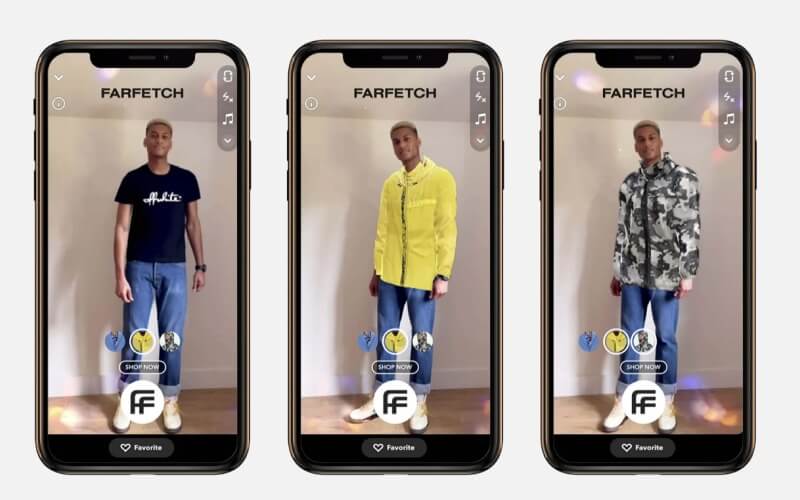
Likewise, companies such as ASOS and Adidas use virtual try-on technology to map augmented reality fashion items onto a range of models, each with a different shape and size. Using these AR clothing try-on tools, consumers can get a sense of what a garment would look like on a body similar to theirs.
However, innovative brands like 1822 Denim have gone one step further by enabling customers to view its inclusive denim products on their own, unique virtual models with the help of YourFit by 3DLOOK. To use the solution, online shoppers simply choose an item of clothing and click on a widget on a product page to be voice-guided through a quick and easy scanning process using a smartphone camera. The solution then displays exactly how the item would look on the individual and what size would fit best, giving brands the unique ability to offer their consumers a genuine dressing room experience online.
Request a DemoEcommerce conversion hacks: Why are retailers racing to implement AR experiences?
With no way to touch or see a product before purchasing, consumers are often reluctant to purchase from online fashion stores. However, implementing an AR shopping solution is among the top ecommerce conversion hacks for those looking to provide consumers with the confidence to purchase — According to Threekit, 71% of consumers will shop more often with a brand that incorporates AR technology into the customer journey.
The rise of augmented reality and virtual reality in the fashion ecommerce sector is significantly changing the way consumers shop worldwide. Generation Z, especially, is driving the push for personalized shopping encounters. This demographic envisions a future where both brick-and-mortar and online stores cater to their unique preferences, signaling a notable departure from the traditional one-size-fits-all approach.
Experiences such as AR try-on provide a fun and novel way for customers to browse a variety of products, keeping them interested for up to 2.7x longer and increasing the opportunity to up-sell and cross-sell to highly-engaged customers. These tools also take the guesswork out of shopping for garments online, offering customers a clear understanding of how a garment will look and fit on their body and providing greater confidence that will encourage them to go ahead with a purchase.
Could your business benefit from augmented reality clothing fitting technology?
With consumers demanding technology-driven experiences that boost convenience, improve sustainability, and help to inform their purchases, augmented reality clothes shopping tools, such as virtual try-on, will be essential to the modern fashion business.
For ecommerce retailers, clothes try-on technology can help to create exciting, interactive online shopping experiences that empower consumers to make more informed purchasing decisions. With the freedom to explore options, customize products to their taste, and try on a wide variety of garments from anywhere, the use of 3D technology can increase ecommerce conversion rates by up to 40%.
Not only can it improve the chances of securing a sale, but by implementing AR try-on, clothes retailers can also boost AOVs and repeat purchases, with 71% of consumers willing to shop more often if AR technology is incorporated into the customer journey, according to Threekit.
Try-on technology could also have a drastic impact on ecommerce’s sky-high return rates. With 70% of returns due to poor fit or style, according to McKinsey, enabling customers to try on garments virtually, as they would in a physical store, will eliminate their reliance on sizing charts that vary drastically from retailer to retailer, or unsustainable bracket shopping practices.
In turn, this will reduce the costly burden of returns on fashion retailers and help create the sustainable industry that modern consumers desire.
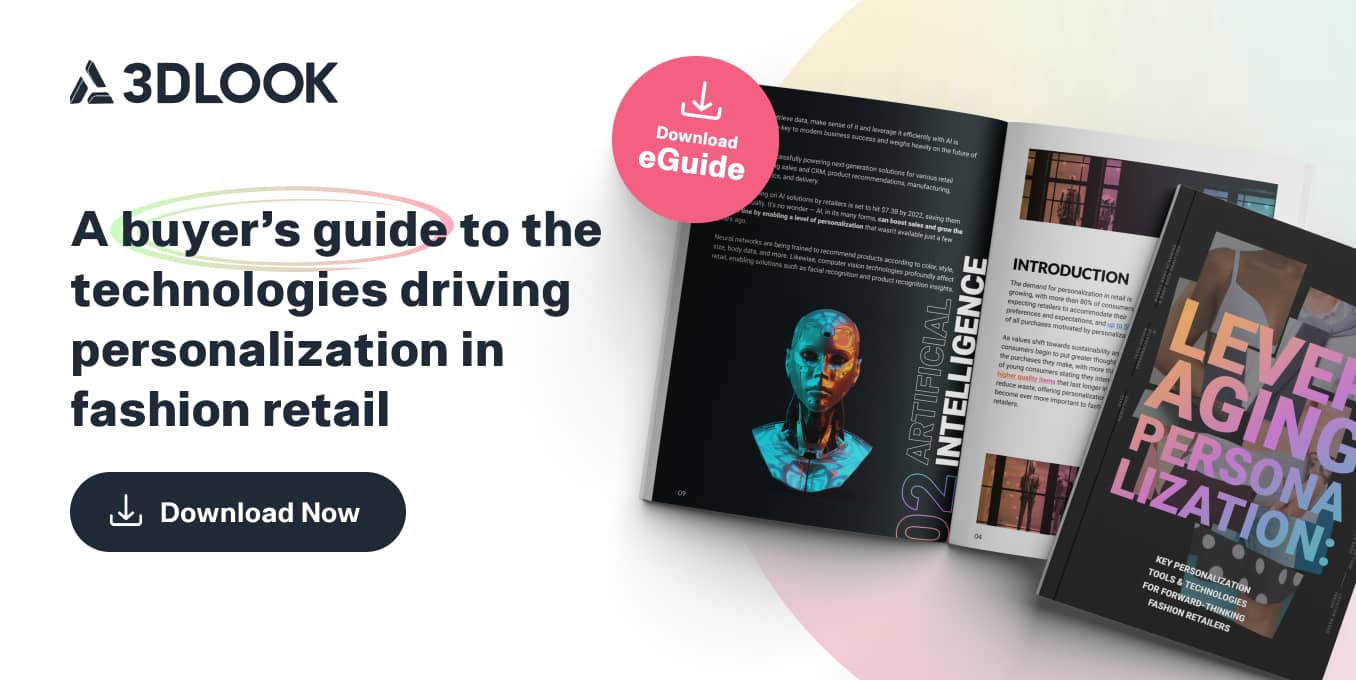
AR virtual try-ons – also a benefit for physical clothing stores
For brick and mortar retailers, AR clothing try-on solutions also hold significant potential to streamline the in-store shopping experience. Through ‘smart mirrors’ spread across the shop floor, customers can instantly and effortlessly try on clothes in the 3d dressing room, changing clothes, colors and patterns without undressing.
Our modern, busy lifestyles mean that today’s consumers have less time to shop around. In-store clothes virtual try-on solutions will remove the chore of finding sizes, waiting for a changing room, and undressing, freeing up more time for customers to find garments they love.
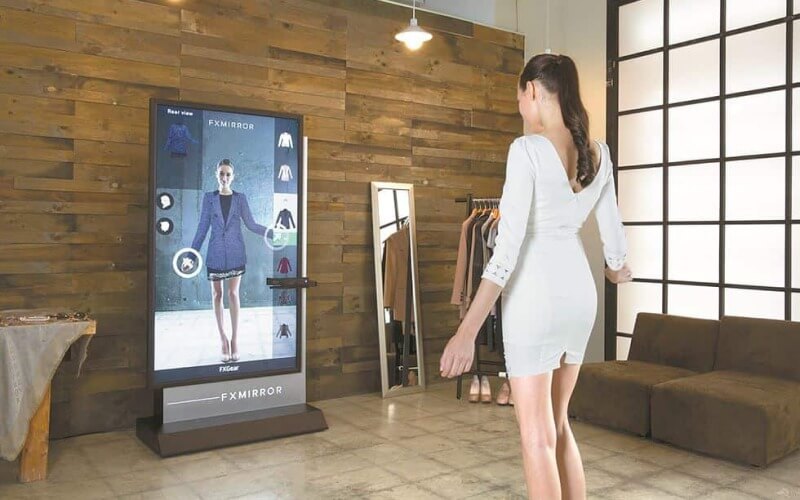
But it won’t just increase a retailer’s chances of securing a sale. With 70% of customers set to show greater loyalty to brands that implement AR into the shopping experience, it could also encourage customers to return to a store time and again.
Metaverse Fashion Week from 2023 effectively highlighted the idea that AR can help brands build brand loyalty. The event showed the potential of augmented reality in the fashion industry and how it could mark a transformation in the retail landscape, setting new standards for customer interaction.
For fashion manufacturers, the implementation of AR clothing try-on solutions such as 3DLOOK’s YourFit, which uses body scanning technology to create an exact digital representation of each and every customer, will create an abundance of anonymized data. This data can be used to design future garments around real customer bodies, tweak grading rules, and distribute garments effectively according to the needs and desires of consumers in any given area.
By feeding this data into a body shape analytics tool, brands can gain a better understanding of their actual customer and design accordingly, creating products that match the shape and size of those most likely to purchase their products. With a better understanding of who is purchasing their products where, manufacturers can optimize manufacturing and distribution to ensure garments are being produced to meet demand and shipped to where they are most likely to sell.
Request a DemoAR clothing: A must-have for fashion businesses, customers and our planet
With consumers demanding technology-driven experiences that boost convenience, improve sustainability, and help to inform their purchases, augmented reality clothes shopping tools, such as AR try-ons, will be an essential investment for modern fashion retailers and brands.
For customers, AR technology in fashion is the equivalent of engaging, new experiences to enjoy products that fit them perfectly. For businesses, implementing AR virtual try-on means improved conversion rates, fewer returns, less waste polluting the air and more data to steer future product development and refine grading, planning and distribution.
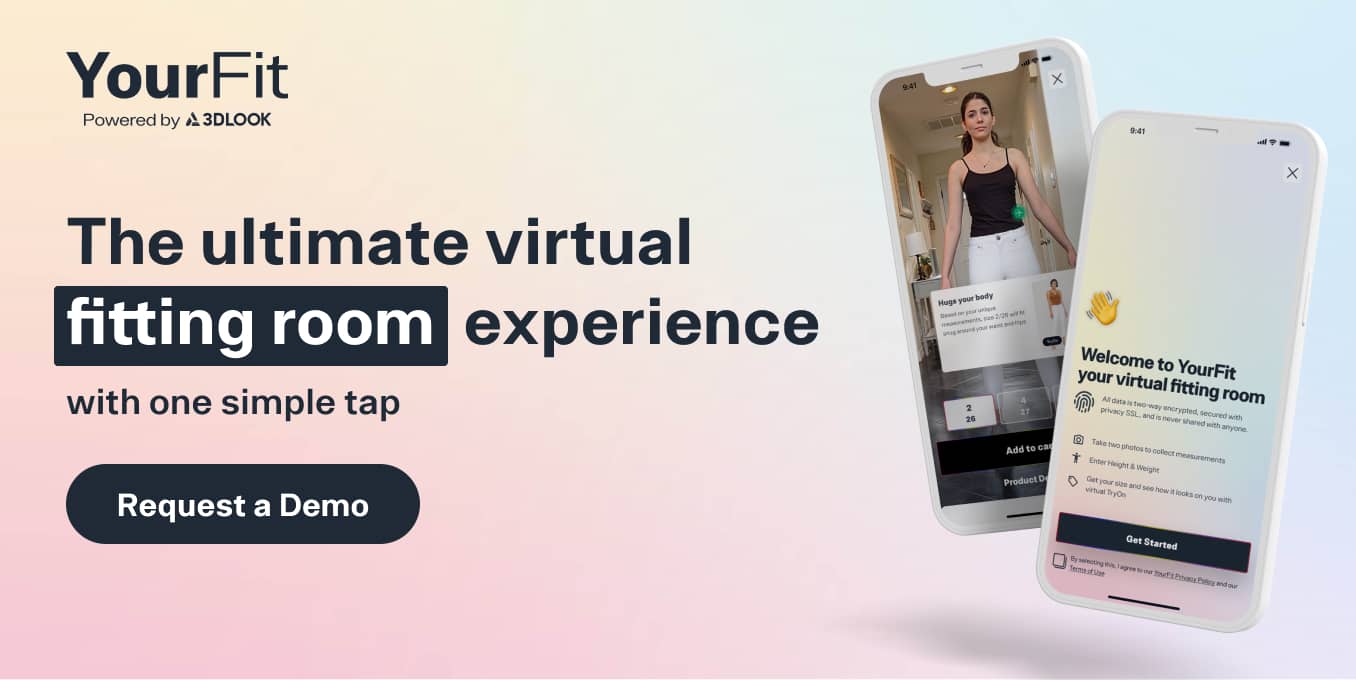
YOURFIT
A simple, user-friendly, and intuitive fit personalization platform that helps shoppers find the best size clothing while also providing an engaging try-on experience!
